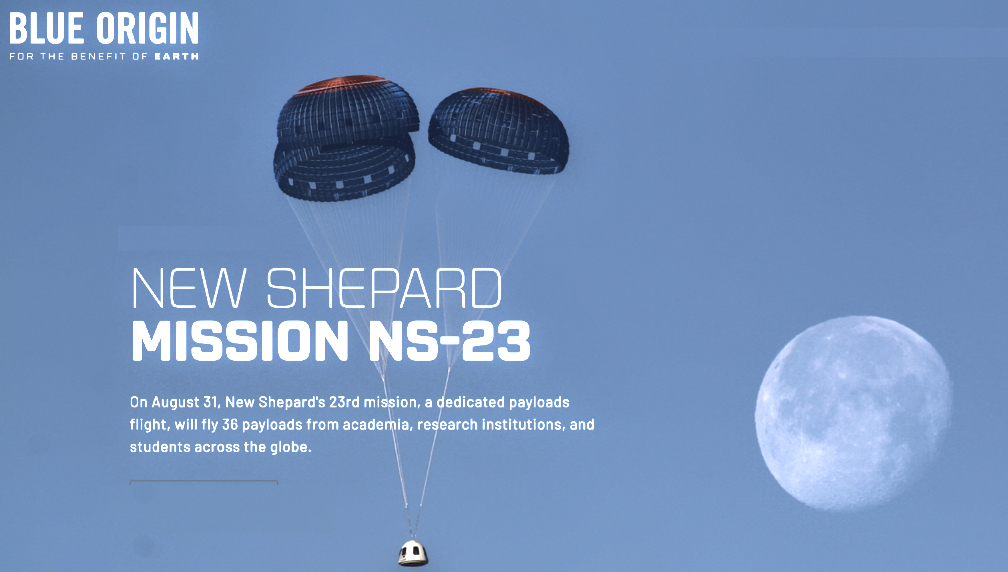
On August 31, New Shepard’s 23rd mission, a dedicated payloads flight, will fly 36 payloads from academia, research institutions and students across the globe — the launch window opens at 8:30 a.m., CDT / 13:30 UTC, from Launch Site One in West Texas.
This Blue Origin mission brings the total number of commercial payloads flown on the vehicle to more than 150. Two of the payloads will fly on the exterior of the New Shepard booster for ambient exposure to the space environment, while 18 of the payloads on this flight are funded by NASA, primarily by the Flight Opportunities program.

Twenty-four payloads are from K-12 schools, universities and STEM-focused organizations, including the American Institute of Aeronautics and Astronautics (AIAA), American Society for Gravitational and Space Research (ASGSR), and SHAD Canada STEM Foundation, among others.
This is double the number of education-focused payloads from previous payload flight manifests. In many cases, these payloads expose students as young as elementary school to STEM skills like coding, environmental testing and CAD design often not taught until college.
Among the NS-23 payloads are tens of thousands of postcards from Blue Origin’s nonprofit, Club for the Future, whose Postcards to Space program gives people across the world access to space on New Shepard. The Club’s mission is to inspire future generations to pursue careers in STEM for the benefit of Earth.

The postcards on this mission come from 19 Club for the Future grant recipients and their partners, including Guayaquil’s Space Society in Ecuador, the U.S. Space and Rocket Center, students who participated in STEM NOLA and Kenner Planetarium events in New Orleans, and schools across Kentucky.
This will be the fourth flight for the New Shepard program this year, the first dedicated payload flight since NS-17 in August 2021 and the ninth flight for this vehicle, which is dedicated to flying science and research payloads to space. To date, the New Shepard program has flown 31 humans to space.
